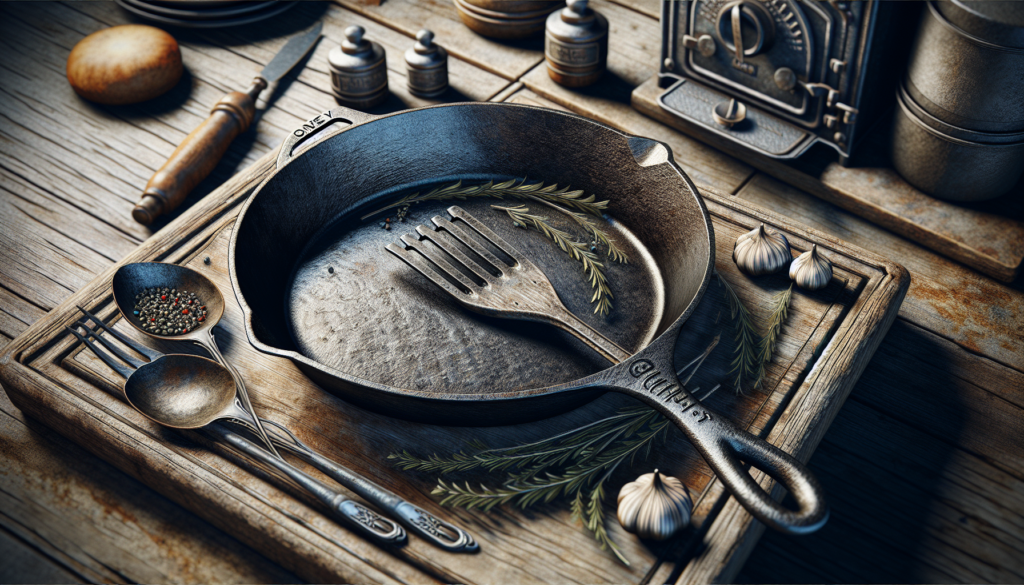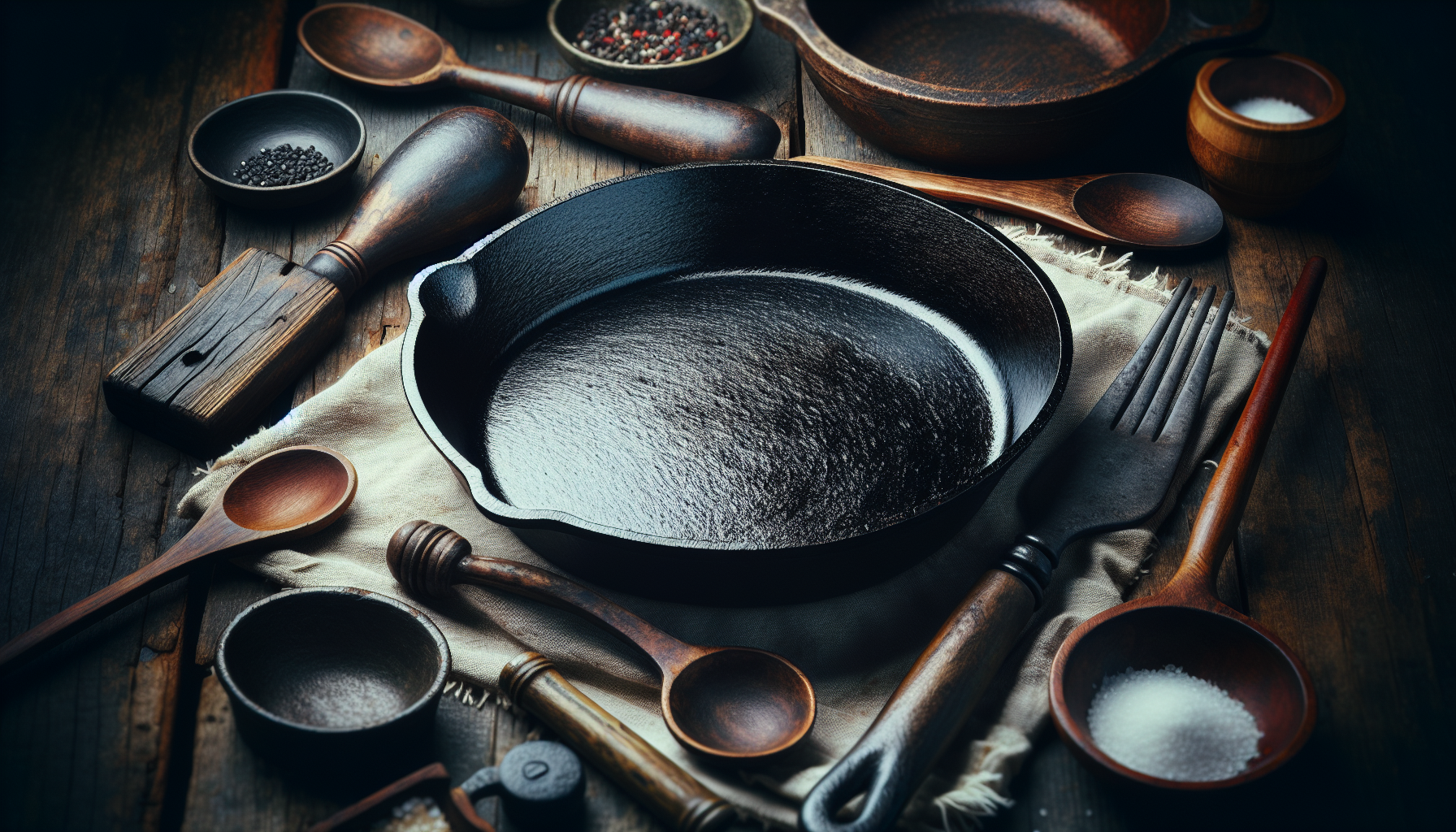If you’re a cooking enthusiast or simply enjoy whipping up delicious meals in the kitchen, chances are you own a cast iron skillet. But have you ever wondered how long this trusty kitchen companion is expected to last? Well, look no further! In this article, we’ll delve into the fascinating world of cast iron skillets and explore their remarkable longevity. Whether you inherited your skillet from your grandmother or recently purchased one, join us as we uncover just how durable these kitchen staples truly are.
How long does a cast iron skillet last?

Understanding the life expectancy of cast iron skillets
Cast iron skillets have been a kitchen staple for centuries, known for their durability and versatility. However, like any other cookware, they do have a lifespan. Understanding the factors that affect the longevity of a cast iron skillet can help you make the most out of this valuable kitchen tool.
Factors that affect the lifespan of a cast iron skillet
Several factors influence how long a cast iron skillet will last. One of the most significant factors is the quality and craftsmanship of the skillet itself. A well-made cast iron skillet that has been properly seasoned and maintained will generally last longer than a lower-quality one.
The frequency of usage and cooking techniques employed can also impact the lifespan of a cast iron skillet. Regular use, especially with high-heat cooking methods such as searing or frying, can lead to more wear and tear over time. Furthermore, the type of heat source and temperature control used during cooking can affect the performance and longevity of the skillet.
Cleaning and care practices play a crucial role in determining the lifespan of a cast iron skillet. Improper cleaning methods, such as using harsh detergents or abrasive scrubbers, can strip away the crucial seasoning layer and cause damage to the skillet. Additionally, exposure to moisture without proper drying and rust prevention measures can lead to corrosion and reduce the skillet’s lifespan.
The way a cast iron skillet is stored and handled also affects its longevity. Proper storage, such as ensuring it is completely dry and placed in a cool, dry area, can prevent rust and other damage. Rough handling or stacking heavy objects on top of a cast iron skillet can cause warping or cracks, reducing its lifespan.
Seasoning and maintenance of cast iron skillets
Seasoning is an essential process for maintaining and extending the lifespan of a cast iron skillet. Seasoning involves applying a layer of oil or fat and heating it to create a natural non-stick surface and protect against rust. Regular maintenance routines, such as wiping the skillet with a thin layer of oil after each use and occasionally re-seasoning, can help prevent the deterioration of the seasoning layer.
To season a cast iron skillet, start by cleaning it thoroughly with hot, soapy water to remove any impurities. Dry the skillet completely, then apply a thin layer of oil or fat, such as vegetable oil or flaxseed oil, to the entire surface, including the handle. Place the skillet upside down in an oven preheated to around 350°F (175°C) and bake it for about an hour. Allow the skillet to cool completely before using or storing it.
Regular cleaning and maintenance are essential for preserving the lifespan of a cast iron skillet. After each use, avoid using harsh soaps or detergents, as they can strip away the seasoning. Instead, use hot water and a non-abrasive brush or sponge to remove any food residue. Dry the skillet thoroughly to prevent moisture from causing rust.
Avoiding common mistakes when caring for cast iron skillets is crucial. Some common mistakes include using metal utensils that can scratch the seasoning layer, exposing the skillet to high temperatures without food, or leaving acidic foods in the skillet for extended periods, which can compromise the seasoning.
Common signs of wear and tear in a cast iron skillet
Over time, a cast iron skillet may show signs of wear and tear. One common indicator is the loss of seasoning, which occurs when the non-stick surface becomes less effective, causing food to stick to the skillet. This can be remedied by re-seasoning the skillet.
Another sign to watch out for is the appearance of rust or corrosion. If the skillet is not properly seasoned or stored in a humid environment, it can develop patches of rust. To remove rust, scrub the affected area with steel wool or a stiff brush, then re-season the skillet.
A warped or cracked surface is another indication of wear and tear. This can happen due to sudden changes in temperature or mishandling of the skillet. While small cracks may not significantly impact performance, larger cracks or warping may require professional repair or replacement.
Uneven heat distribution is another potential issue with older cast iron skillets. If you notice areas of your skillet getting hotter or cooler than others during cooking, it may be time to consider replacing it.
Additionally, excessive smoke or burning smells during cooking can be a sign of a deteriorating seasoning layer or inadequate cleaning. If these issues persist despite proper care, it may be time to evaluate whether it’s worth repairing or replacing the skillet.

Can a cast iron skillet be repaired?
Minor issues with a cast iron skillet can often be repaired to extend its lifespan. Small cracks, for example, can be fixed by filling them with a high-heat metal epoxy or by welding. If the skillet has lost its seasoning, it can be re-seasoned to restore its non-stick properties.
However, more severe damage may require professional restoration or replacement. Extensive cracks, significant warping, or irreversible corrosion may render the skillet unsafe or impractical to repair. In such cases, it is best to seek professional advice or consider investing in a new cast iron skillet.
To prevent further damage to a cast iron skillet, it’s important to avoid using it if you notice any significant defects. Continued use with severe damage can lead to worsened performance and potential safety hazards in the kitchen.
Calphalon cookware 10-Piece Cookware review
Longevity comparison: Cast iron vs. other types of cookware
Cast iron skillets are renowned for their longevity, often passed down through generations. However, how does their lifespan compare to that of other types of cookware?
While cast iron skillets require regular maintenance and seasoning to maintain their quality, they can potentially outlast many other types of cookware. Non-stick pans, for example, tend to have a shorter lifespan, as their coating can wear off over time. Stainless steel pans, on the other hand, can last a long time with proper care, but they may not be as durable as well-seasoned cast iron for certain cooking methods.
Determining the most durable cookware material ultimately depends on individual preferences, cooking habits, and the specific cookware brand or model. Cast iron’s reputation for longevity, versatility, and excellent heat retention make it a popular choice for many home cooks.
How to extend the lifespan of a cast iron skillet
Taking proper care of a cast iron skillet can significantly extend its lifespan. Here are some tips to help you make the most out of your investment:
- Proper seasoning techniques: Season your cast iron skillet regularly to maintain its non-stick properties and protect against rust. Follow the step-by-step guide mentioned above for a thorough seasoning process.
- Cooking and heat management tips: Use moderate heat settings to prevent overheating the skillet, which can cause damage. Preheat the skillet gradually to allow even heat distribution. Avoid extreme temperature changes, such as placing a hot skillet under cold water or placing it directly on a cold surface.
- Cleaning and drying methods: After each use, clean the skillet with hot water and a non-abrasive brush or sponge. Avoid soap or detergents that can strip away the seasoning. Dry the skillet thoroughly to prevent moisture from causing rust. If necessary, add a thin layer of oil after cleaning to replenish the seasoning.
- Preventing and removing rust: Store your cast iron skillet in a dry place to minimize exposure to moisture. If rust develops, scrub it off using steel wool or a stiff brush, then re-season the skillet to restore its protective layer.
- Avoiding abrasive cleaning tools and utensils: Use non-metallic utensils and non-abrasive cleaning tools to avoid scratching the seasoning layer. Wooden or silicone utensils are gentle on the skillet’s surface.
- Storing the skillet correctly to prevent damage: Store your cast iron skillet in a cool, dry place. Avoid stacking heavy objects on top of it, as this can cause warping or damage. To prevent moisture buildup, you can place a paper towel or cloth inside the skillet before storing it.
When is it time to replace a cast iron skillet?
Knowing when it’s time to replace a cast iron skillet is essential for optimal cooking performance and safety. While cast iron skillets are known for their durability, they are not indestructible.
Evaluate the condition of your skillet periodically. If you notice significant cracks, severe warping, or extensive corrosion that cannot be repaired, it may be time to replace it. Additionally, if your skillet consistently shows signs of poor heat distribution or experiences other performance issues that affect your cooking results, it may be worth considering an upgrade.
Personal preferences and needs also play a role in determining when to replace a cast iron skillet. If you feel that your current skillet no longer meets your cooking requirements or if you desire a different size or design, it may be a good time for an upgrade.
Calphalon cookware 10-Piece Cookware review
Myths and misconceptions about cast iron skillet lifespan
Several myths and misconceptions surround the lifespan of cast iron skillets. Here are some common misunderstandings:
- The myth of cast iron skillets lasting forever: While cast iron skillets are durable and long-lasting when properly cared for, they are not invincible. They can develop wear and tear over time and may require maintenance or eventual replacement.
- Debunking common misconceptions about maintenance: Some people believe that cast iron skillets should never be cleaned with soap or water. However, mild soap and water are perfectly acceptable for regular cleaning. The seasoning layer protects the skillet, and gentle cleaning methods will not harm it.
- Understanding the limitations of cast iron skillets: Cast iron skillets have excellent heat retention, but they heat slowly and unevenly compared to other materials. They are also prone to rust if not properly seasoned and cared for. Understanding these limitations and adapting your cooking methods can help you make the most of your cast iron skillet.
In conclusion, when properly seasoned, cared for, and repaired as needed, a cast iron skillet can provide years, if not decades, of reliable cooking performance. Understanding the factors that affect its lifespan, employing proper maintenance techniques, and knowing when to replace it will help you enjoy the benefits of this timeless kitchen treasure for years to come.




